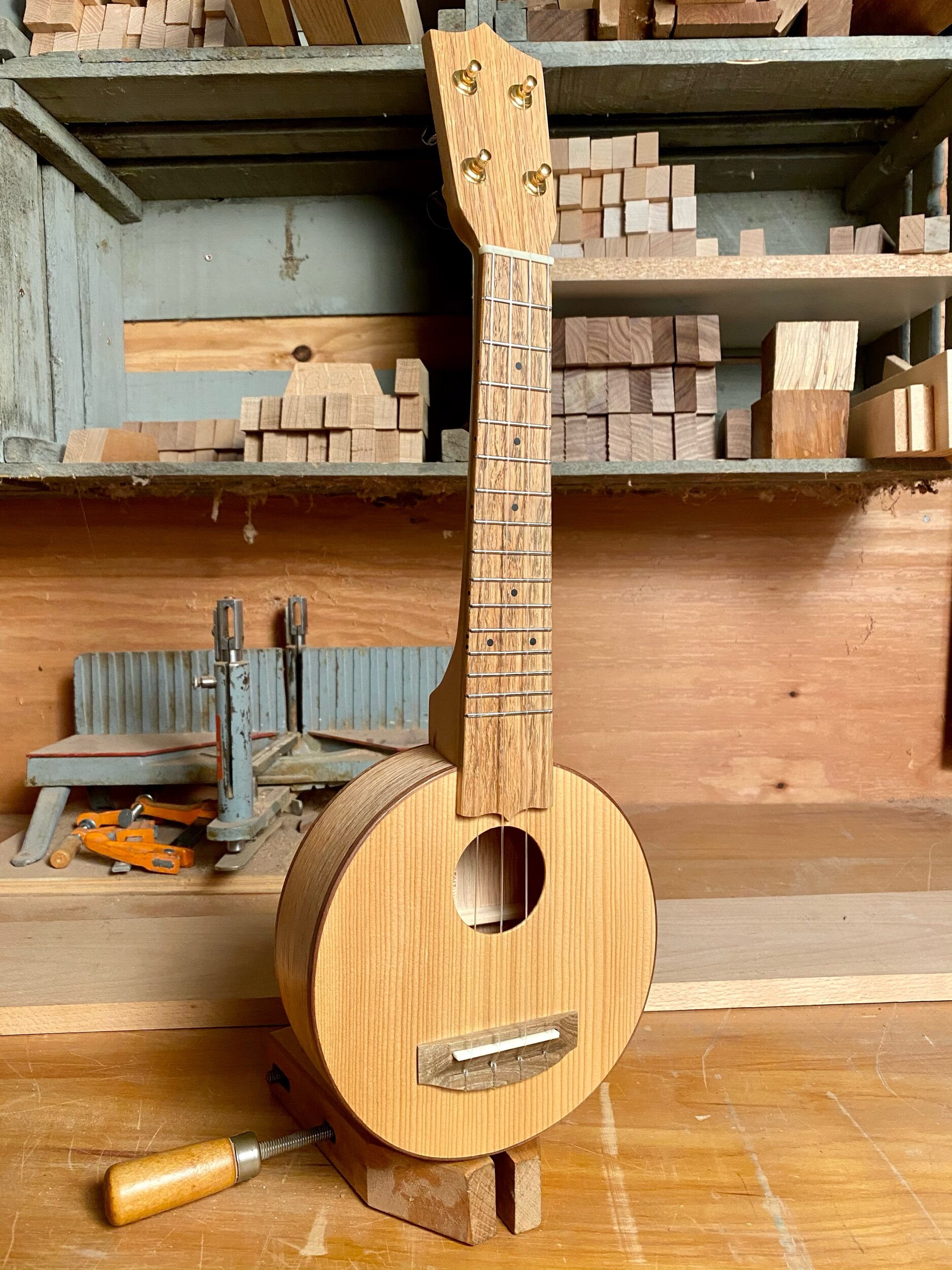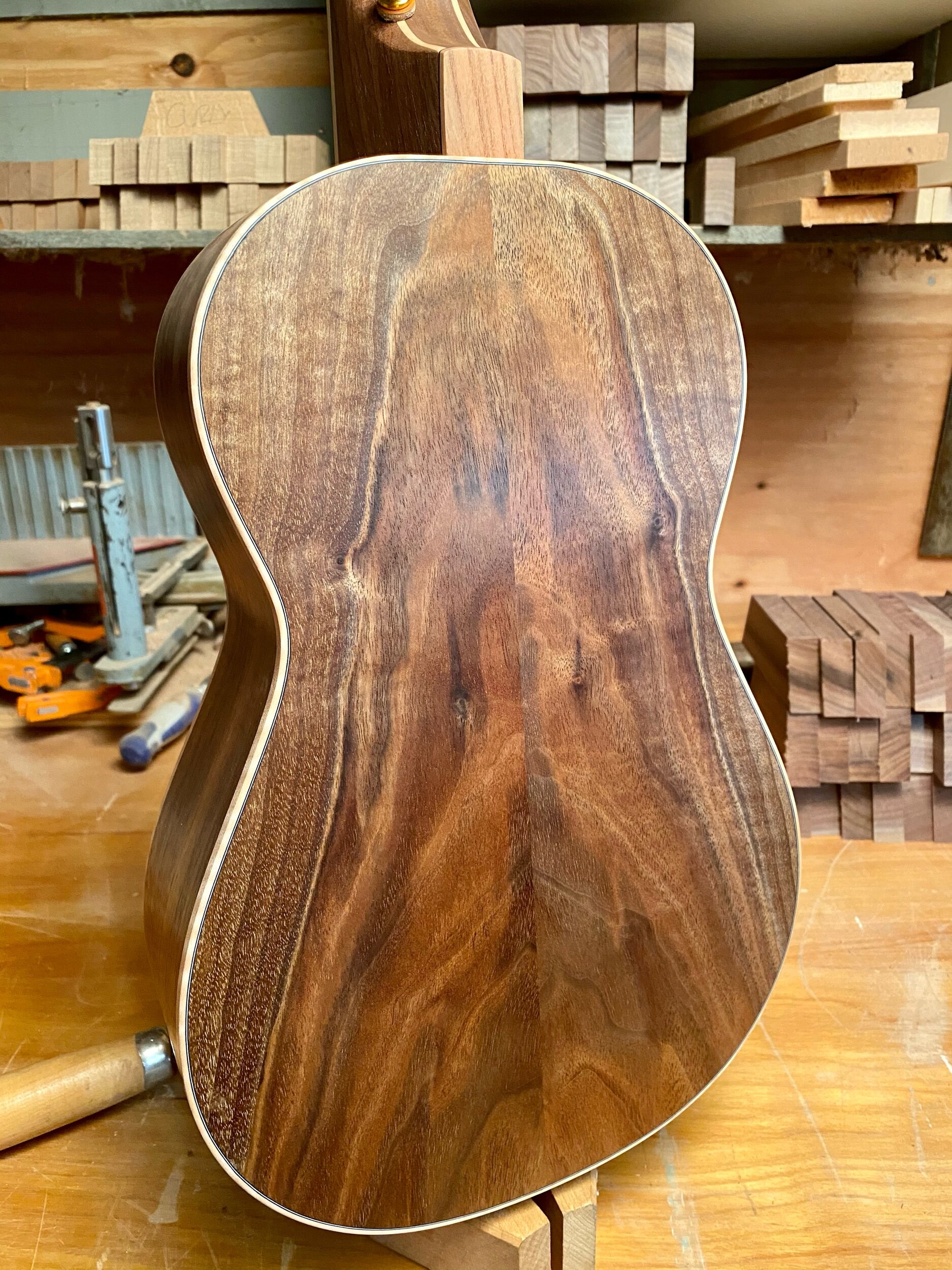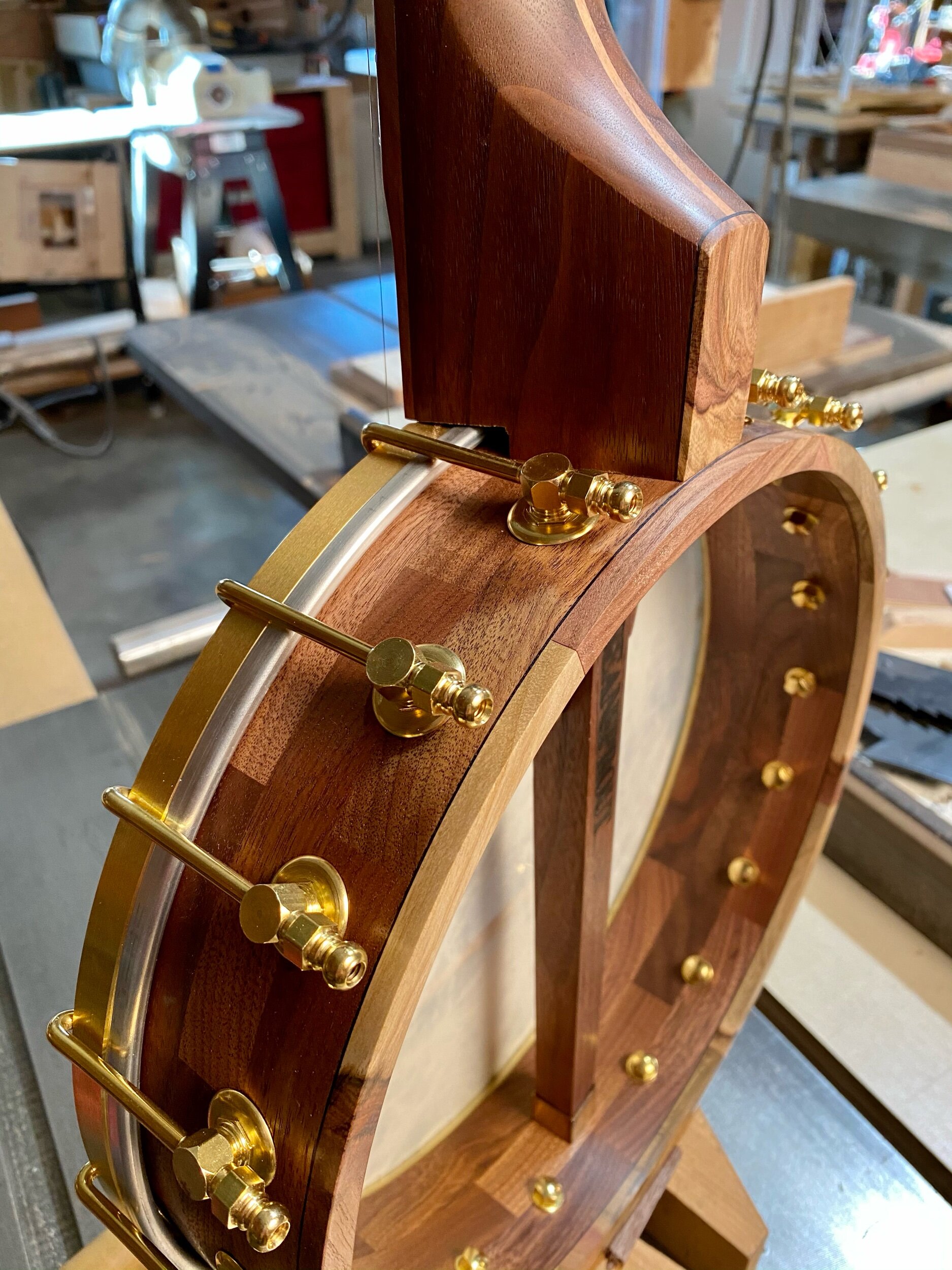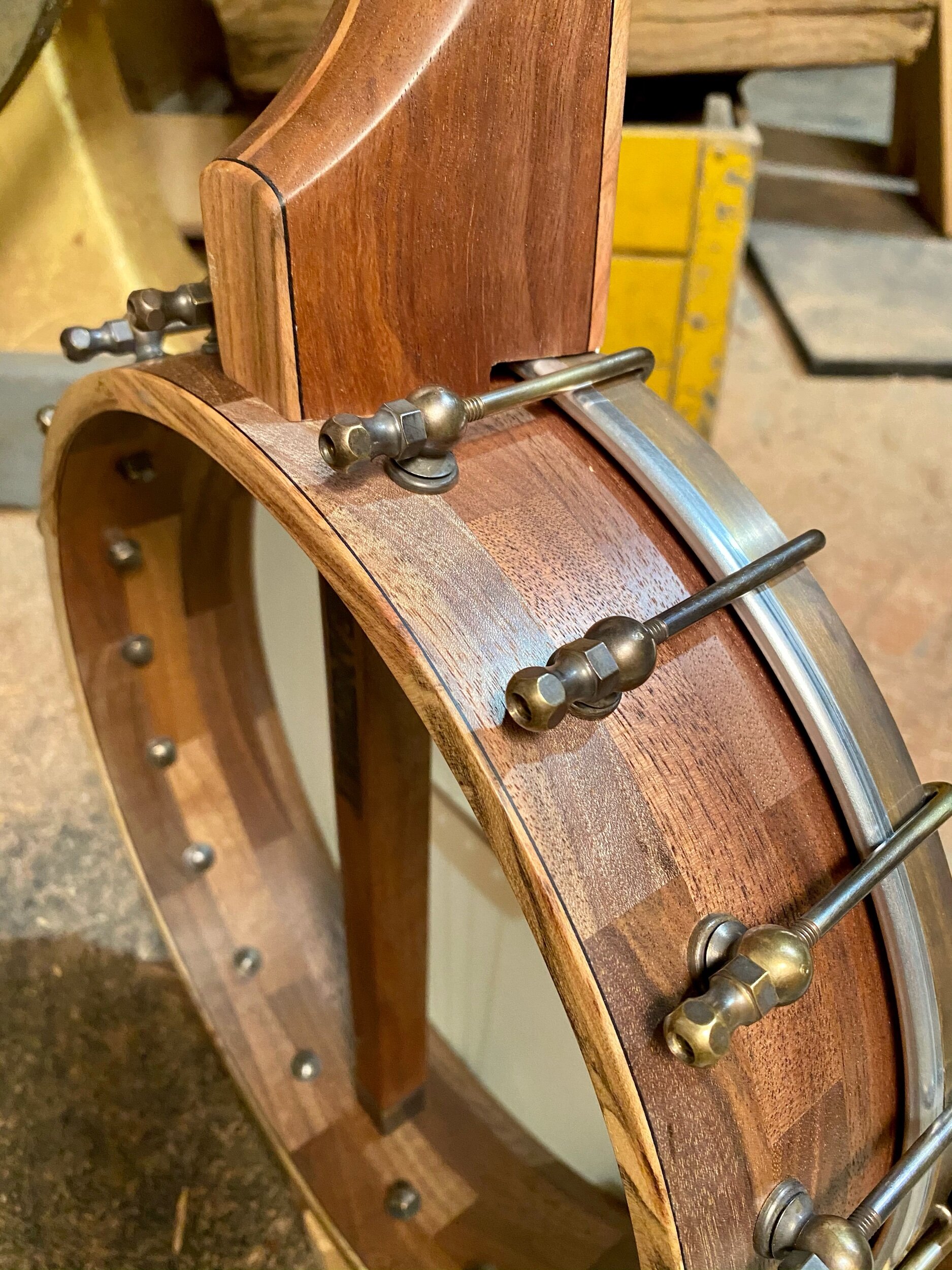This is a new configuration for me: an 11” inch rim with a 20” scale, five string neck. It makes for a smaller and lighter five string banjo, but not as small as my mini five string design. It is made from walnut from Vashon island and Pistachio from California orchards. The hooks and nuts are from Brooks Masten in Portland. The non steel strings, goat skin head and all wood block rim make for an earthy sound that goes well with the smaller design. It is super comfortable and would be the ideal couch banjo! Drop me a line if you want one like it.
“Hello,
My banjo arrived today and I am as pleased
with it as I can be!
Thank you for working so closely with me during the process and for producing this instrument that I love.
It even smells so good – it’s aroma therapy!
- B. B. ”










































































































































